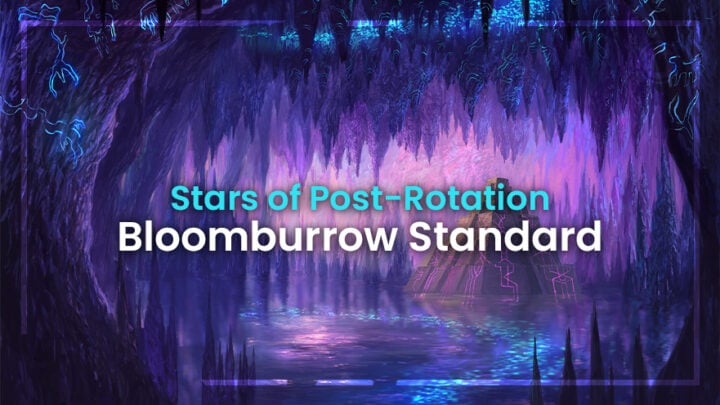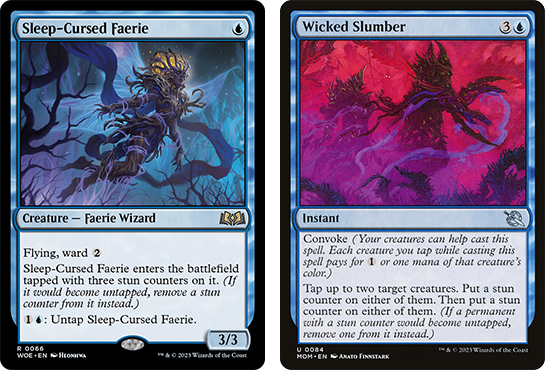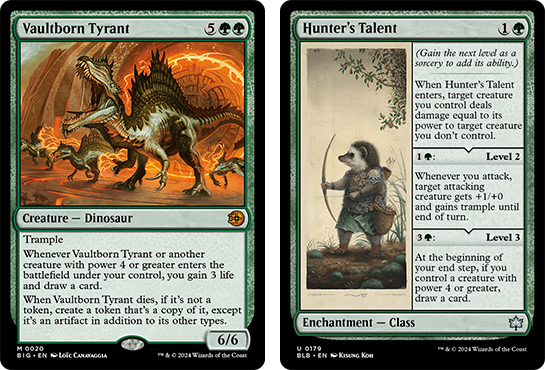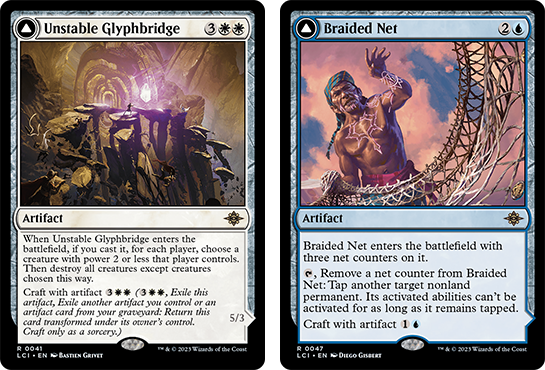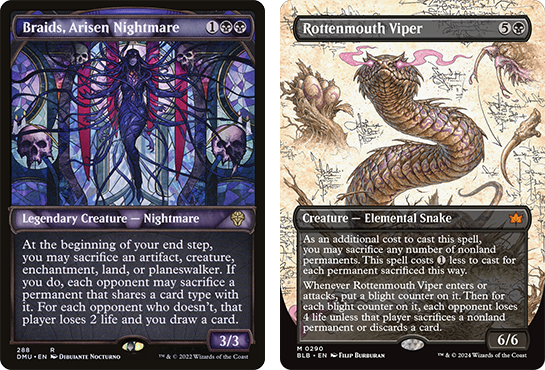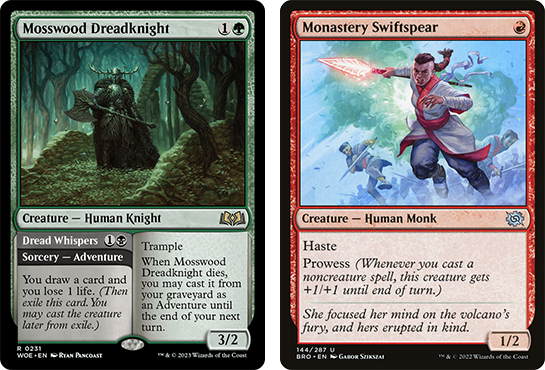Standard is in a chaotic place right now. Even if Bloomburrow had zero cards in it, it still would have been the most impactful set since 2022 – purely because it triggered the first proper rotation of the 3-year Standard era. Many of the cards and decks which had calcified in place at the top of the metagame are now gone, never to return.
In their wake, new decks must rise – but not all of these fresh contenders are actually “new.” Archetypes from past sets which had been written off as flops are finally having their real chance to shine. So which of these Standard sleepers truly have what it takes to become the new tournament kings?
RG Dinosaurs
It’s a little shocking to me how far dinosaurs have been from the Standard metagame. This massively popular creature type got a big push in Lost Caverns of Ixalan, receiving solid rare creatures up and down the curve as well as powerful, low-cost interaction and support.
Other useful dinos like Tyrranax Rex or Rampaging Raptor have consistently appeared in sets throughout the past few years – a sure sign that Wizards are trying to make thunder lizards a thing! But even as the strongest green creature deck in a Standard with Snakeskin Veil, pre-rotation dinosaurs just could not break through.
Now, however, this deck has become our prime example of addition by subtraction. The mana efficiency and board presence of creatures like Hulking Raptor, Pugnacious Hammerskull, Palani’s Hatcher and Bonehoard Dracosaur is in a different league to their rivals, quickly overwhelming any Bloomburrow critters who try to square up. There’s a smorgasbord of top-end finishers too: Trumpeting Carnosaur leads the way, but Vaultborn Tyrant, Ghalta, Gishath and Etali are all threats your opponent will have to play around.
Even the sideboard choices and interaction seem tailor-made: Giant Cindermaw, Scytheclaw Raptor, Triumphant Chomp, Tranquil Frillback, and Hunter’s Talent. Dinosaurs might also be the ideal Smuggler’s Surprise deck: all the modes are highly valuable, it has use cases for both high-roll and low-roll draws, and there are multiple sources of incidental mana and treasure generation which make the 8-mana “Collected Company” mode a realistic option!
With Cavern of Souls to help power creatures past countermagic, and Trumpeting Carnosaur and Itzquinth providing free removal slots for aggro, there’s no matchup that dinosaur fans need truly fear. It’s your time
– so get out there and claim a place at the top of Standard’s food chain!
WU Artifact Control
It’s normal for a control deck to play a few noncreature permanents, usually to provide a source of steady card draw or similar value over time. But this deck is a far rarer sight: a controlling deck which leans heavily into artifact synergies throughout the decklist, and using those permanents to replace many of the instants and sorceries you might expect to see in UW control.
Obviously this kind of construction is only possible with very specific materials, and it’s taken multiple artifact-themed Standard sets to build up the UW card pool. But between The Brothers’ War, Lost Caverns of Ixalan, and The Big Score, we’re living in a moment where artifact-themed control is genuinely competing with more traditional builds.
The big reason to go down this path – other than novelty – is for the threats. Cityscape Leveler, Simulacrum Synthesizer, and the Prototype artifact creatures are high-impact plays which can be drawn and cast more easily with artifact-specific support cards. Just as valuable are bombs like Unstable Glyphbridge, Spring-Loaded Sawblades, The Mightstone and Weakstone, and Thousand Moons Smithy – reasonable role-player effects which leave behind potential threats in the form of craftable artifacts.
This leads to both a higher density of threats than most control decks, as well as a less obvious division between threats and answers which can complicate your opponent’s approach to the matchup.
I’ve been a believer in Simulacrum Synthesizer since brewing a Pioneer deck around it a few months back. If you haven’t seen it in action, this card is the biggest reason why utility artifacts like Braided Net are making the cut. Having multiple Synthesizers in play together is basically enough to win on its own, which has led some players to trim the “artifact ramp” aspect of the deck and just back up this build-around with more traditional interaction.
Key to this approach is our ability to clone Synthesizer (or any other artifact) with Three Steps Ahead – potentially even as a kicker to the counterspell or draw-discard modes. Being able to treat our primary counterspell as additional wincons is the ultimate luxury for control players, and leads to some of the most efficient deckbuilding you’ll ever see in Standard!
WB Braids Stax
Seeing WB Stax deck pop up in Standard results shortly before rotation already had me drafting up an article – this kind of grindy, synergy-driven strategy is my most favorite way to play Magic. But even I didn’t quite register how good a position Braids Stax would find itself in following rotation.
Rite of Oblivion is a meaningful loss, but it’s really the only important piece we had to give up – and Bloomburrow immediately volunteered several excellent cards to more than make up those missing slots. Rottenmouth Viper, Zoraline and Bandit’s Talent are each highly impactful in their own right, to the point that the post-rotation version of Braids Stax has actually become MORE consistent in pressuring opposing life totals!
As with any Stax deck, the gameplan here is to attack your opponent’s resources as quickly as possible, crippling them before they can really gain any momentum towards a win condition. Our discard and removal spells are cheaper because they let the opponent choose which cards to lose, but it’s still a one-for-one trade in card advantage terms.
In fact it’s better than that, since they technically leave behind spent permanents that can be recycled to fuel the second half of our deck. Nurturing Pixie, Braids, and Rottenmouth Viper all give us chances to utilize such junk to great effect, retroactively tilting those earlier trades in our favor.
Braids can be a tricky card to get the hang of using, but she really shines in the current build where both the life loss and card draw are impactful – and where the ability to consistently sac permanent types your opponent doesn’t control takes the choice out of their hands.
Regularly sacrificing your own permanents makes this one of the few archetypes that can currently leverage powerful recursion like Zoraline and Serra Paragon despite the prevalence of exiling sweepers. The discard and direct damage elements of the deck give Braids Stax a strong control matchup in general. The real challenge for this deck is something like Domain Ramp, or the new Mardu Cruelclaw Cascade – something which can simply topdeck and resolve game-winning spells that cut through all the nickel-and-dime effects Stax tries to assemble.
IT’S NEVER THE ONES YOU EXPECT
These aren’t the only decks whose stock is rising in the days and weeks following rotation; they might not even end up being the strongest ones. But together they should at least help you identify where to start looking for other hidden gems. With the overall size and thus average quality of the card pool reduced, now is the best time for narrow synergies and typal decks to challenge the proven threats of GB Midrange and Mono-Red Aggro.
It’s when you’ll see the most relative power gain from building around a card like Simulacrum Synthesizer, or even one like Ixalli’s Lorekeeper. In particular, it’s time to revisit some of the themes or archetypes which were only really supported for a single set. I know I’m going to at least try and figure out a Battle-centric constructed list before there’s anything else added to shove them into irrelevance!
I know I’m having an absolute blast with it, although that might be because the themes of Lost Caverns and Wilds of Eldraine suit my preferred gameplay so well. If you’re also a player who enjoys having wide board states and many moving parts, now is an excellent time to grind Ranked. If you just want to win now… maybe put those wildcards towards an Innkeeper’s Talent deck first. Either way though, you won’t regret giving Bloomburrow Standard a try!

Tom’s fate was sealed in 7th grade when his friend lent him a pile of commons to play Magic. He quickly picked up Boros and Orzhov decks in Ravnica block and has remained a staunch white magician ever since. A fan of all Constructed formats, he enjoys studying the history of the tournament meta. He specializes in midrange decks, especially Death & Taxes and Martyr Proc. One day, he swears he will win an MCQ with Evershrike. Ask him how at @AWanderingBard, or watch him stream Magic at twitch.tv/TheWanderingBard.

